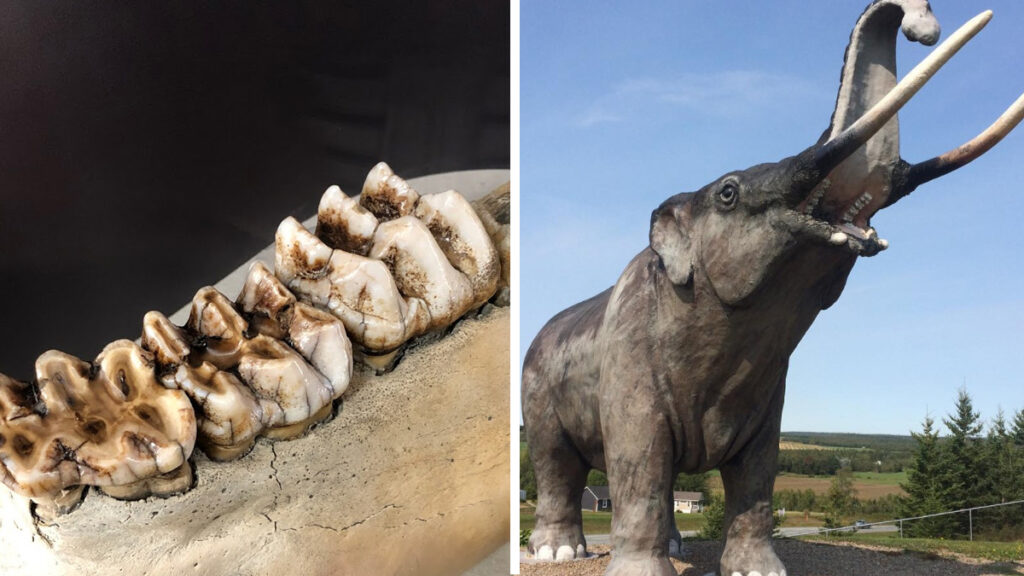
One of the largest paleontological finds in Nova Scotia occurred 30 years ago today, October 21, 1991 in Milford, Nova Scotia.
The day started just as any other when Stanley McMullin, when the large equipment operator showed up to work at the National Gypsum Quarry. The day was about to turn into anything but ordinary.
During his work McMullin unearthed what appeared to be large teeth, a tusk and bones. Work was immediately halted and the Nova Scotia Museum was contacted. When officials from the museum and archeologists visited the site they quickly identified the bones as the remains of a mastodon.
A large recovery plan went into effect almost immediately and over the next ten months, all of the remains, plus most of the surrounding clay was taken to the museum. The bones were cleaned, preserved and catalogued.
Mastodons stood about three metres tall, but were only about two thirds as large as an average elephant. They had imposing tusks, up to about three metres long that grew forward rather than down. They weighed between four and five tons. They became extinct around 10,000 years ago.
Scientists were able to conclude the bones from the mastodon to be around 80,000 years old, from a male that was about 22 years of age. They could also tell it died early in the spring. The mastodon was thought to be part of a herd that may have gathered at the gypsum site for the minerals in the soil. This conclusion was drawn because a juvenile mastodon was also found at the same site.
The Age of the Mastodon exhibit will open in February 2022 at the Museum of Natural History in Halifax, NS. You can visit Mastodon Ridge in Stewiacke, NS to learn more about the mastodon unearthed about 15km away.



